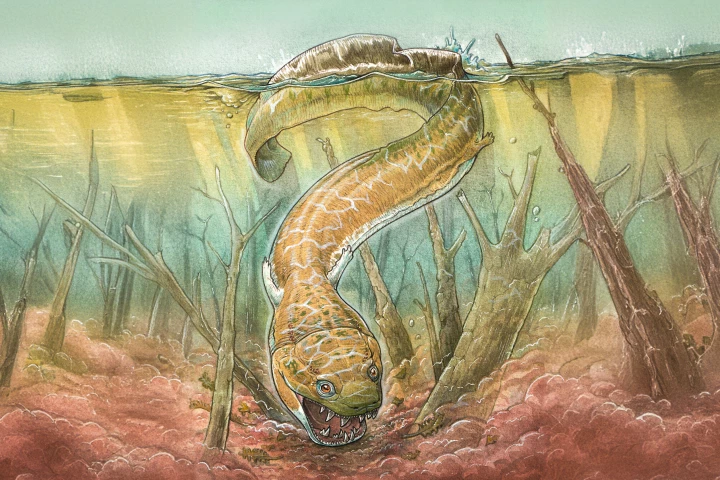The Field Museum of Natural History
-
Long before dinosaurs roamed the Earth, another giant predator claimed the top spot in its environment. Meet Gaiasia, a huge salamander-like creature that stalked the Permian swamps.
-
Ants can be found in huge numbers in almost all of the world’s regions and habitats. But how did they become the most populous, highly diverse insect species on the planet? Scientists may have an answer, and it has to do with plants.
-
Dinosaurs sit at the crossroads between reptiles and birds, leading scientists to debate whether they were warm- or cold-blooded. A new study may have the answer for different dinosaurs by analyzing metabolic markers from their breath in their bones.
-
After being declared the first known swimming dinosaur in 2020, Spinosaurus was subsequently suspected of being a shore-wader. A new analysis of its bones, however, has swung the needle back towards the concept of it going underwater to hunt its prey.
-
Ordinarily, if you want to check if two plants of the same species come from genetically different populations, you have to analyze their DNA. A new study, however, has found that an analysis of their leaves is a much quicker and easier alternative.
-
"Sue" is the most complete Tyrannosaurus rex skeleton ever found. Although the fossilized bones were unearthed 20 years ago, scientists recently discovered the remains of a previously-unknown shark that co-existed along with the dinosaur – and the fish has been named after a classic video game.
-
In the past, scientists have discovered the fossilized remains of prehistoric turtles that had a partial shell, but that lacked the toothless beak of modern turtles. Recently, however, a fossil turtle was found that had no shell, but that DID have a beak.
-
The Sun was far more active in its early years, but we only really know this from studying other similar stars. Now, researchers have found the fingerprints of this active young Sun in tiny, bright blue crystals preserved in meteorites from a collection at Chicago’s Field Museum.
-
Fossils are certainly fascinating, but the darn things do take rather a long time to form. What if you want to fossilize something as fast as possible? Well, scientists have developed a method of doing so within about 24 hours – and it could lead to big advances in the field of paleontology.
-
Humans can sustain a concussion from a force as low as 60 G’s. But the humble woodpecker inflicts forces of over 1,000 G’s on itself regularly, so how does it protect itself from brain damage? According to a new study, it doesn’t.
-
New computer modeling technology suggests that Tyrannosaurus rex was even larger than previously assumed.










